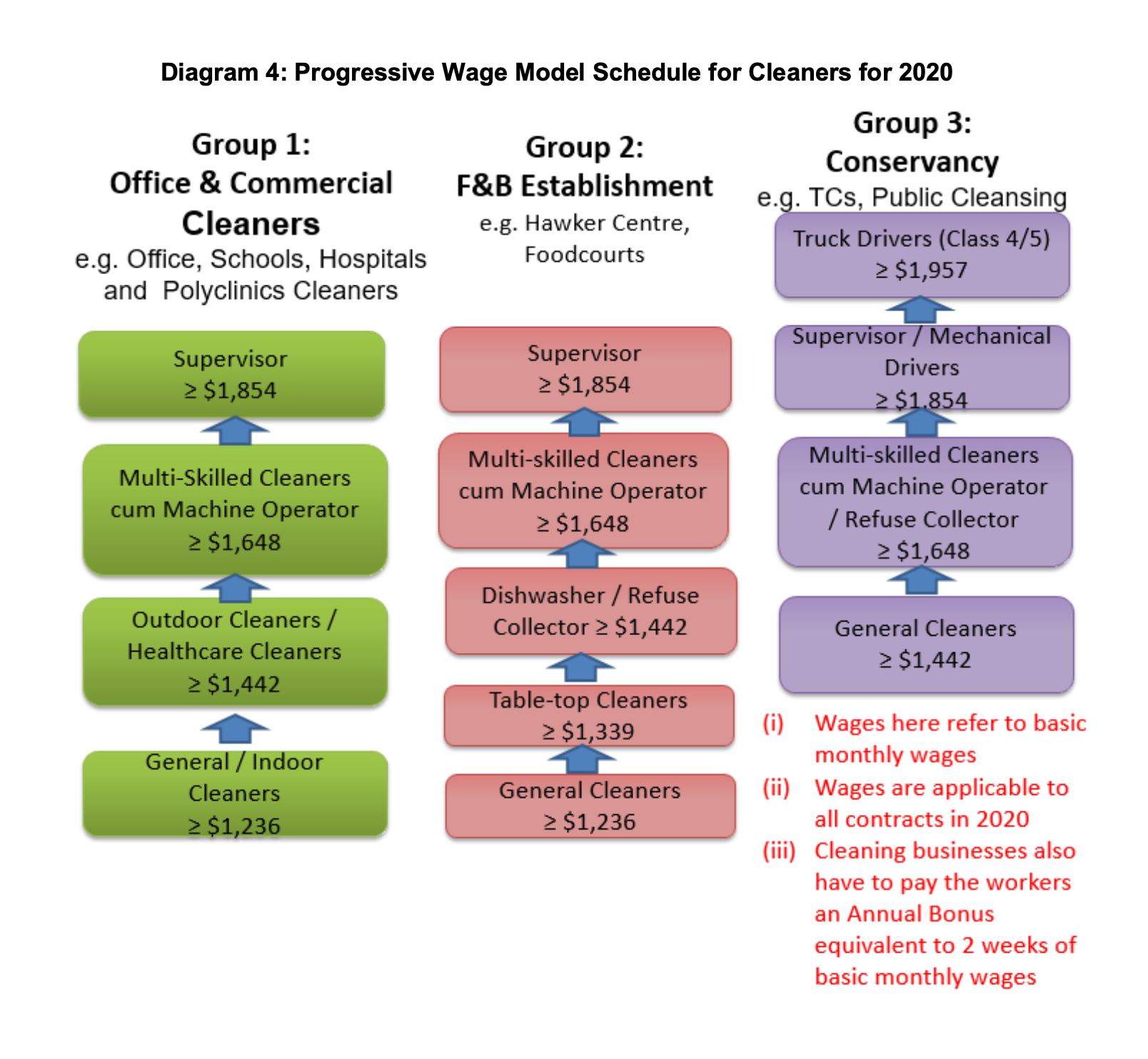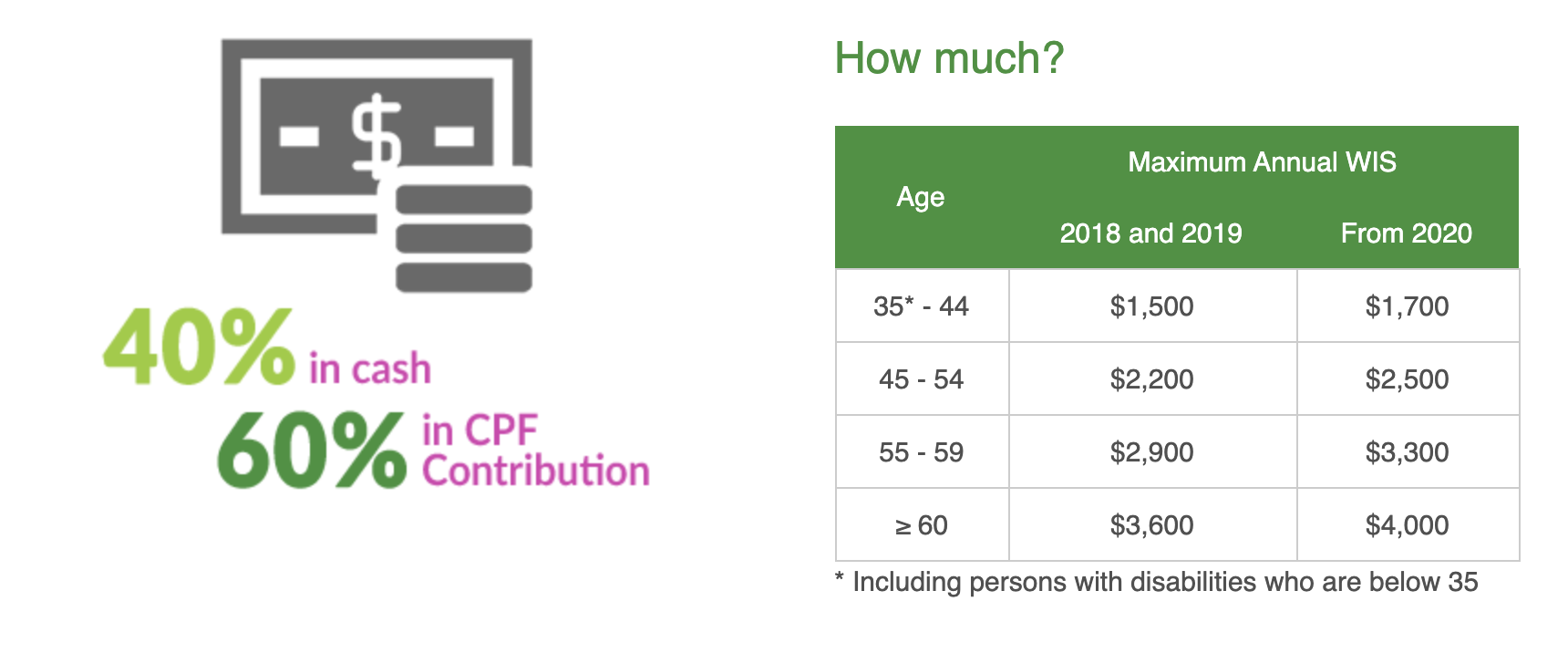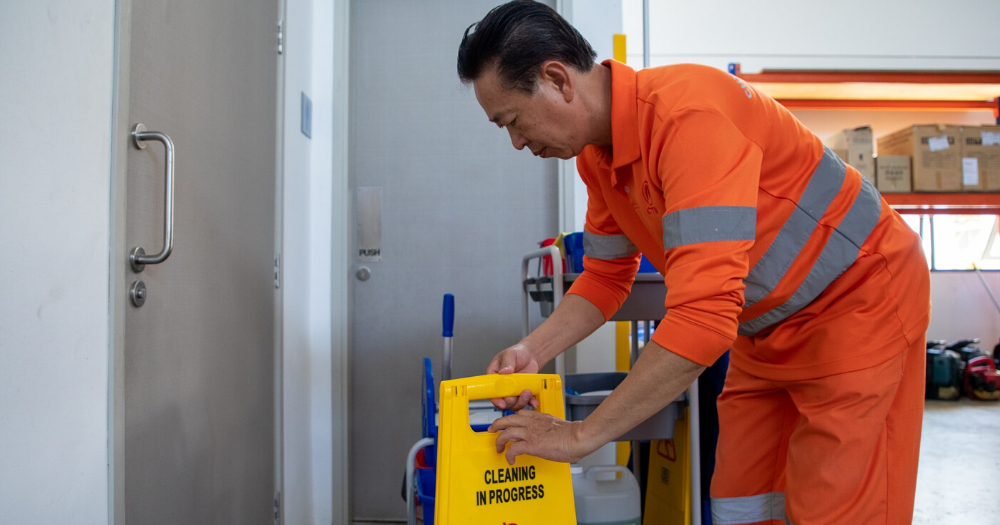Following the general elections last week, one of the more persistent debates that stood out was the proposal by the Workers' Party for a national minimum wage.
This was one of the talking points in the GE2020 debate that was held on July 1.
In the debate, WP's Jamus Lim brought up the party's proposal to have a minimum wage as a way to ensure that workers "work with dignity".
The People's Action Party's (PAP) Vivian Balakrishnan acknowledged the WP's minimum wage proposal, bringing up the government's very own "Progressive Wage Model" as an alternative.
Since the debate, some netizens have taken to the internet to voice out their concerns about having a minimum wage in Singapore.
Lim took to his own Facebook page to address netizens, even citing academic papers to justify why a minimum wage might be the way forward in closing the inequality gap in Singapore.
But what is the actual difference between a national minimum wage and the progressive wage model?
What is a national minimum wage?
A minimum wage is simply a legally mandated minimum salary that employers have to pay to their employees.
The benefit of a minimum wage is clear — workers will be guaranteed, by law, a minimum salary to take home.
In the WP's manifesto, they call for "all working Singaporeans to receive a minimum take-home wage of S$1,300 a month for full-time work."
This amount, said WP, is what an average four-person household in Singapore needs for basic necessities such as food, clothing, and shelter.
According to the party, there are currently more than 100,000 people in Singapore who earn less than that.
Minimum wage might push up cost of goods and services
Two main objections have been brought up by detractors of the minimum wage policy. The first is the question about who will pay for this increase in wages. This is the subject of one of the papers referenced by Lim on Facebook.
An increase in wages will increase the costs of operation for businesses in Singapore if they maintain the same number of employees. Businesses generally have two options. They could offset these costs by absorbing the costs themselves, or by passing the costs on to the customers. The paper cited by Lim found that firms did a mix of both: 75% of the increase in salary was passed on to the customer while 25% was absorbed by the business.The possibility of an increase in cost of goods and services has been something that has been mentioned for quite a while now.
Lim said in his Facebook post that he "thinks we can afford to chip in a little to take care of the least well-off in society."
Fellow WP member Yee Jenn Jong echoed the sentiment in a Facebook addressing concerns about minimum wage as well. He wrote:
Similarly, the PAP's Tharman Shanmugaratnam also talked about rising costs in an episode of a PAP live talk show that was held during the campaigning season."If we call ourselves a First World country, we must be more equitable in the way we treat lower wage workers."
In that episode, Senior Minister Tharman talked about how a minimum wage "is only the first step" of the Progressive Wage Model and acknowledged that costs will go up because of this.
Tharman said: "As Singaporeans, we will have to pay slightly higher costs. But that is a small cost to pay for a fairer and more equitable society, where everyone is moving up together.
Will minimum wage lead to more unemployment?
Some folks also object against a minimum wage because they say it leads to an increase in unemployment.
One concern is that with higher wages, businesses might not be able to afford some staff and hence let them go to keep cost of operations down.
Is this true? Well, it's complicated.
Whether or not a business will be incentivised to replace an employee is dependent on how replaceable the role is. However, quite a number of academic papers studying the subject did show the effect of a minimum wage on unemployment rate was negligible.
This is plausible. If the business is able to sufficiently offset the increased costs by increasing its revenue, then it will not be incentivised to let employees go.
However, this effect also depends on the industry.
In one of the papers referenced by Lim, their analysis showed that the industries such as manufacturing and trading, where it is harder to pass on costs, saw slightly greater unemployment rates.
Another caveat is that most meta-analyses on minimum wage policies point towards minimum wage having a low effect on unemployment. A recent report that reviewed a rather huge body of research suggested that "any job losses are quite small", and the increased in costs for businesses are more often absorbed by other factors instead.
What is the Progressive Wage Model?
While the Singapore government has consistently rejected implementing a minimum wage, it has a policy which is, surprisingly, quite similar.
The Progressive Wage Model (PWM) is a system introduced by the government to lift the wages of low-income earners.
The NTUC first introduced the PWM in 2012 under then labour chief Lim Swee Say.
The model was first made mandatory for the cleaning sector in 2015, and it establishes a minimum pay employers have to give out to employees.
According to the Tripartite Cluster for Cleaners (TCC) report and recommendations issued in 2016, an entry level cleaner should make at least S$1,236, depending on the sub-sector they are working in, in 2020.
 Photo via TCC report and recommendations.
Photo via TCC report and recommendations.
The government also provides a recommended minimum and maximum wage ratio within each job tier. For example, the recommended min-max ratio for an entry level cleaner is 1.2. This means that an entry level cleaner in the "Office & Commercial Cleaners" sub-sector can earn between S$1,236 and S$1,483.20.
PWM has a minimum wage component
As mentioned earlier (by Tharman no less), the PWM has a minimum wage component.
This is the minimum salary that employers have to pay if employees are in roles that require additional skills. This structure allows employees to earn higher wages by seeking out training opportunities — meaning you earn more as you upgrade your skills.
This "ladder" is the feature of the PWM that is above and beyond a mere minimum wage.
The PWM is also wielded as a licensing and accreditation tool. Businesses that do not meet these wage requirements will not be licensed to operate.
Key differences between PWM and Minimum Wage
There are key differences between a national minimum wage and the PWM.
The first difference is in their scope.
A national minimum wage would require all businesses in Singapore to pay their workers above the stated level, whether they can afford it or not.
The PWM however, is currently only implemented and made mandatory in three sectors: cleaning, security, and landscaping. The government has said that they intend to extend the PWM to other sectors, but it is unclear when they intend to do so.
The second difference is the type of wage.
The numbers set out in the PWM is a basic wage, whereas the minimum wage in the WP manifesto refers to a take-home pay. The basic wage set out in the PWM does not factor in the employee's CPF contribution, which means that they will take-home between 5 to 20 per cent less than the stated figure.
However, the government often speaks of the PWM together with the Workfare Income Supplement (WIS) scheme.
This is a monthly cash and CPF payout that is given to Singaporean employees who make below S$2,300 a month and are 35-years-old or older.
How much money do they receive under the Workfare Income Supplement scheme?
Between S$1,700 and S$4,000 per year which works out to about S$142 to S$333 per month. Older workers receive more money from the Workfare Income Supplement scheme.
60 per cent of this supplement then goes into the employee's CPF, and the other 40 per cent is disbursed in cash.
 Photo via Workfare website.
Photo via Workfare website.
So how much does this amount to exactly?
Let's consider a 66-year-old who is working as an entry-level cleaner, earning S$1,236 a month. After their employee CPF contribution, their take-home would be S$1,174.20.
Assuming that they get the maximum amount they are eligible for under the WIS, they would be given an additional S$133.30 by the government every month. The total amount of money they will take home then is S$1,307.50.
This would be on par with the S$1,300 minimum wage that the WP proposes.
Bear in mind that if this entry-level cleaner is younger, he would get a smaller WIS payout, and in turn, bring home less money.
Focus on employers and employees vs employees only
Another difference is that the PWM considers both employees and employers.
Workers' salaries increase when they move up the training "ladder", assuring employers that there is a corresponding increase in productivity.
According to the Ministry of Manpower website, the "PWM benefits workers by mapping out a clear career pathway for their wages to rise along with training and improvements in productivity and standards."
In its report on recommendations for progressive wages in the cleaning sector, the ministry also wrote that the introduction of the PWM was to help "low-wage workers in different sectors achieve sustainable real wage increases which correspond to their skills and productivity levels".
A minimum wage policy alone is centered on employees.
Yee wrote in a Facebook post:
"It might take a very long time for the government to move PWM to all sectors, so having a Minimum Wage is a good signal that we wish to leave no workers behind."
What's the takeaway?
One reason that the PWM is so fleshed out is that it has the benefit of time.
The PWM was first introduced in 2012. Since then, there have been government reviews of the system, as well as quantitative information about how it benefits beneficiaries.
In one of the PAP's live talk show during the GE campaign on July 1, Manpower Minister Josephine Teo said that despite some scepticism, the PWM works and the labour movement has seen how the model has "impacted their own lives".
In the same talk, Teo said that there is also a sense that "you actually don't want to just do the minimum (with minimum wage). Why do the bare minimum when you can do so much more? And that's what we really want to do, we want to be progressive! We don't want to be just minimum."
However, with a national minimum wage, the WP only has academic research and foreign examples to make its case. This disadvantage should not be overlooked.
Hence, there are questions that could be asked as the debate progresses and more information is revealed.
- When and how does the government intend to implement the PWM to other sectors?
- What is the profile of the 100,000 Singaporeans who earn a take-home wage of less than S$1,300?
- What would be the most effective way to help lift their wages?
- How would local employers respond to a minimum wage? Would they prefer PWM?
- How would local employess — especially those who will benefit the most from either a PWM or minimum wage — respond to either option?
Mothership Explains is a series where we dig deep into the important, interesting, and confusing going-ons in our world and try to, well, explain them.
This series aims to provide in-depth, easy-to-understand explanations to keep our readers up to date on not just what is going on in the world, but also the "why's".
Top image from NEA/FB.
If you like what you read, follow us on Facebook, Instagram, Twitter and Telegram to get the latest updates.
